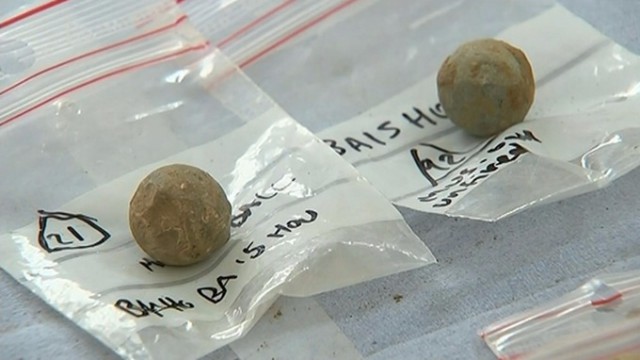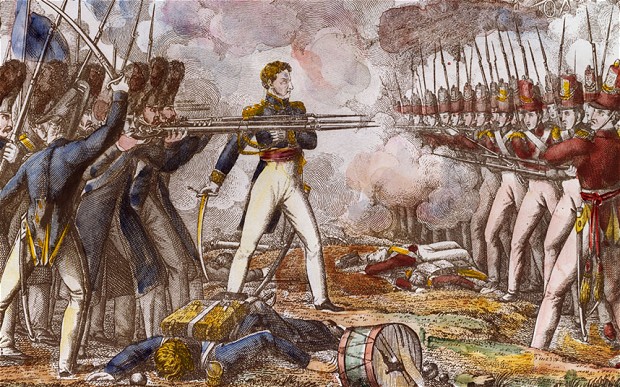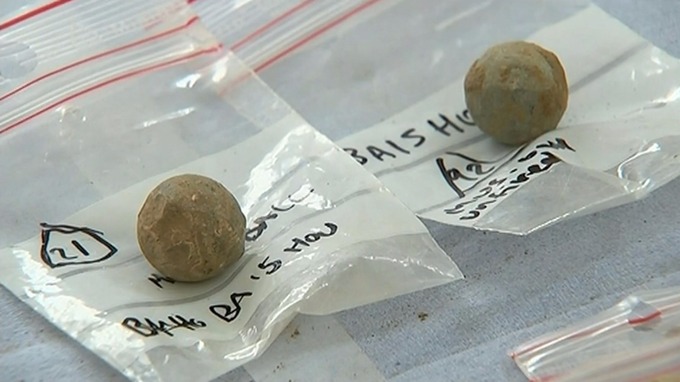An archeological excavation looking into the battlefield of waterloo has discovered some used ‘Muskets’ that are believed to be from the very first shots fired in the Battle of Waterloo.

The center of the excavation is Hougoumont farm in Belgium. The farm holds a very historic status, and a team of expert archeologists with the help of veterans is carrying out the digging to unearth more evidence of the events that triggered the battle. The British cold stream guards against a comparatively large and lighting assault by French troops successfully defended Hougoumont farm.
Archeologists suggest that Hougoumont farm and woods around it saw the fiercest clashes during 1815. The excavation could unearth the mass graves of thousands of soldiers who perished in the fields.
The excavation project is lead by Dr. Tony Pollard of University of Glasgow. Mr. Pollard has said that he is very confident that the discovered Muskets are from the very earliest shots fired during the Waterloo Battle. He added that these woods saw a number of clashes as French troops tried to fight back the positions controlled by the Allies.

Although Waterloo Battlefield has always been regarded a historically significant place, however no serious efforts were made to conduct a technologically sophisticated escalation. This is the first time that experts are not leaving any stone unturned to extract as much information as possible buried in the field.
In the first stage of the excavation, experts had to pin point the areas of interest to narrow down their search for maximum result. A team of experts from Ghent University, Belgium used highly sophisticated soil sensing tools to detect any buried items. The next step was to compare the anomalies detected in the soil against William Silbourne’s map of the Waterloo Battlefield. William Silbourne was a military historian who produced a detailed map of the events on the day of the battle; his map was published sometime in 1830, The Telegraph reports.
A senior member of the excavation team said that the southern end of the woods saw a large number of clashes and heavy fighting. The allies were holding on to their positions while the French troops were trying to push them back. He also added that eyewitness accounts and other evidence points towards the fact that the Allies were on a retreat and that French troops seemed to have an upper hand, for a while at least.
Hougoumont farm was a turning point of the Battle for both the British and French forces. British soldiers were determined to defend the farm against all odds. Napoleon had instructed his commanders to ensure the farm was seized and fully controlled by the French. A cluster of 12 buildings and only few miles away from the Brussels, Hougoumont farm held a very strategic position for both parties. Facing strong 14000 French troops, British ‘Cold stream Guards’ fought bravely, but Napoleonic army was able to push its way into the farm. When French troops were on the brink of penetrating through the entrance of the farm, a brave British Guard Cpl. James Graham stepped forward and managed to shut the door under a hail of shelling. Napoleon’s troops could not succeed in securing the farm and eventually were defeated. Historians agree with Wellington’s statement that suggested that Napoleon was defeated the moment James graham shut the farm door.
It is hoped that the excavation will shed the light on some of the hidden aspect of the clashes at Hougoumont farm, and the Waterloo Battle as a whole.
